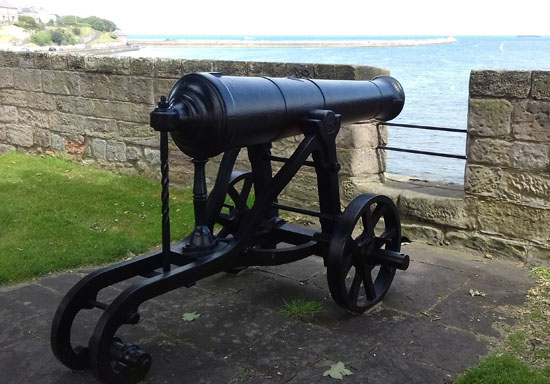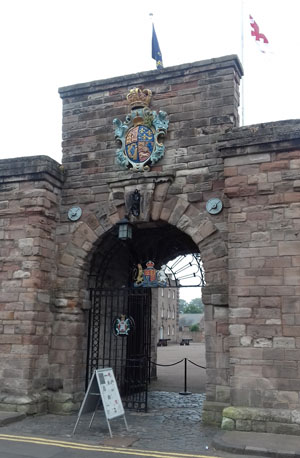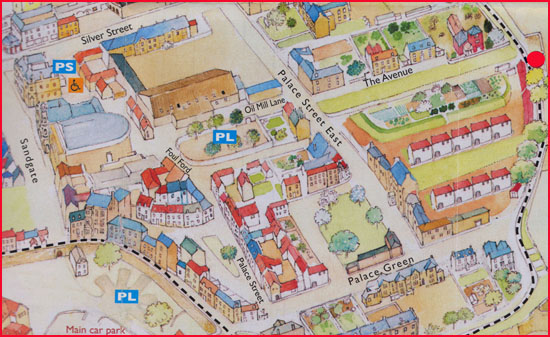
HOME





HOME
|

|

|

|

|
|
P R O F I L E |
||||
|
 Castle & Ramparts Berwick-upon-Tweed Northumberland Great Britain TD15 1DF Telephone: 0370 333 1181 Berwick's Russian cannon, made in 1826, was gifted to the town in 1858. The cannon has been located on the castle ramparts since its arrival in Berwick after the Crimean War. The remains of the medieval castle and fortifications surround the historic town. The castle was founded in the 12th century by the Scottish King David I. In the harsh Scottish coastal environment, the protective surface paint previously used on the gun had deteriorated significantly, resulting in metal corrosion on the gun and the carriage. The cannon was transferred to a specialist workshop in Wales and in 2017 the 'Newcastle Chronicle' announced that the town's captured piece of Russian firepower had been returned to its ramparts location after the restoration work. 
Made in Alexandrovski in Russia, the top of the barrel displays the imperial arms of Russia, the Russian double-headed eagle. The gun has a shot weight of 18lbs. After being captured at Sebastopol in 1856, the gun was set on a carriage specially constructed for it to a Russian pattern by the Royal Arsenal in Woolwich. This was commissioned following talks between the military in Berwick and Secretary Major-General Peel of the War Office in 1858, on the occasion of the Government's proposal to no longer use the town as a military station. A War Office letter specified that the gun was to be treated with great care, saying the cannon is to be a "trophy of the late war". The Russian cannon survived the scrapping drive for metal in the Second World War when it was considered too important to be destroyed. But that fate apparently befell all the other Berwick town walls guns, which were melted down to aid the war effort.  The gun resides on Fishers Fort, an 18th century cannon emplacement that guarded the River Tweed against enemy ships. Also known as Six Gun Battery, it was given the present day layout in the 1770s. Each cannon stood on its own plinth to avoid it sinking into the ground and aiding movement. See the map below for the location of the battery and cannon, east of the town centre. The gun resides on Fishers Fort, an 18th century cannon emplacement that guarded the River Tweed against enemy ships. Also known as Six Gun Battery, it was given the present day layout in the 1770s. Each cannon stood on its own plinth to avoid it sinking into the ground and aiding movement. See the map below for the location of the battery and cannon, east of the town centre.
Picture left - There are 15 or so cannon in the central yard at Berwick Barracks, none of which, in 2018, were identified as being Russian. The historic barracks are within the town perimeter fortifications and are open to visitors. There is also another cannon in one of the bastions on the town walls near the barracks. Again this is not believed to be a Russian Crimean cannon. Russian cannon were at the centre of one of the most famous, or infamous, episodes in British military history 'the charge of the Light Brigade'. During the Battle of Balaclava, the Light Brigade was sent on a frontal assault against a Russian artillery battery, which was well-prepared with excellent fields of defensive fire. Of the brigade's 670 troopers, 118 were killed, 127 wounded, and about 60 taken prisoner. Alfred, Lord Tennyson, then Poet Laureate, in his poem 'The Charge of the Light Brigade' praised the bravery of the brigade while mourning the appalling futility of the charge. 
The above street map shows the present (2018) position of the Crimean Cannon in Berwick as the red dot on the upper right. Website: Click Here ADDITIONAL INFORMATION  CONSTRAINTS Open set times only FACILITIES Access on Foot LANDSCAPE Coastal REGION England - Northern THE FEATURES PRESENT Crimean Cannon Location, past or present |
||||
|